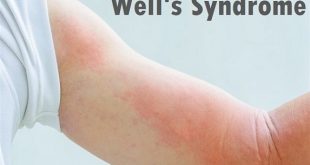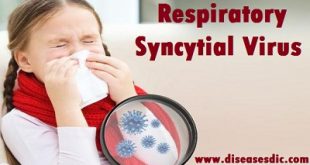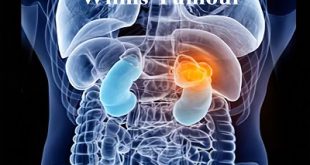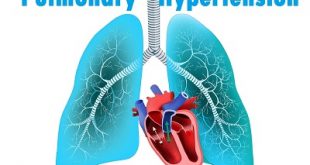Definition
Pertussis, also known as whooping cough, is a highly contagious respiratory disease. It is caused by the bacterium Bordetella pertussis. Pertussis is known for uncontrollable, violent coughing which often makes it hard to breathe. After cough fits, someone with pertussis often needs to take deep breaths, which result in a “whooping” sound. Pertussis can affect people of all ages, but can be very serious, even deadly, for babies less than a year old. The best way to protect against pertussis is by getting vaccinated.
Whooping cough
History
Discovery
B. pertussis was discovered in 1906 by Jules Bordet and Octave Gengou, who also developed the first serology and vaccine. Efforts to develop an inactivated whole-cell vaccine began soon after B. pertussis was cultured that year. In the 1920s, Louis W. Sauer developed a weak vaccine for whooping cough at Evanston Hospital (Evanston, IL). In 1925 Danish physician Thorvald Madsen was the first to test a whole-cell vaccine on a wide scale. Madsen used the vaccine to control outbreaks in the Faroe Islands in the North Sea.
Vaccine
In 1932 an outbreak of whooping cough hit Atlanta, Georgia, prompting pediatrician Leila Denmark to begin her study of the disease. Over the next six years her work was published in the Journal of the American Medical Association, and in partnership with Emory University and Eli Lilly & Company, she developed the first pertussis vaccine. In 1942 American scientists Grace Eldering, Loney Gordon, and Pearl Kendrick combined the whole-cell pertussis vaccine with diphtheria and tetanus toxoids to generate the first DTP combination vaccine. To minimize the frequent side effects caused by the pertussis component, Japanese scientist Yuji Sato developed an acellular vaccine consisting of purified haemagglutinins (HAs: filamentous strep throat and leucocytosis-promoting-factor HA), which are secreted by B. pertussis. Sato’s acellular pertussis vaccine was used in Japan starting in 1981. Later versions of the acellular vaccine in other countries consisted of additional defined components of B. pertussis and were often part of the DTaP combination vaccine.
Epidemiology
Worldwide, whooping cough affects around 16 million people yearly. One estimate for 2013 stated it resulted in about 61,000 deaths – down from 138,000 deaths in 1990. Another estimated 195,000 child deaths yearly from the disease worldwide. This is despite generally high coverage with the DTP and DTaP vaccines. Pertussis is one of the leading causes of vaccine-preventable deaths worldwide. About 90% of all cases occur in developing countries.
Before vaccines, an average of 178,171 cases was reported in the U.S., with peaks reported every two to five years; more than 93% of reported cases occurred in children under 10 years of age. The actual incidence was likely much higher. After vaccinations were introduced in the 1940s, pertussis incidence fell dramatically to approximately 1,000 by 1976. Incidence rates have increased since 1980. In 2015, rates in the United States were 20,762 people.
Pertussis is the only vaccine-preventable disease that is associated with increasing deaths in the U.S. The number of deaths increased from four in 1996 to 17 in 2001, almost all of which were infants under one year. In Canada, the number of pertussis infections has varied between 2,000 and 10,000 reported cases each year over the last ten years, and it is the most common vaccine-preventable illness in Toronto.
In 2009 Australia reported an average of 10,000 cases a year and the number of cases had increased. In the U.S. pertussis in adults has increased significantly since about 2004.
Risk factors
Whooping cough is thought to be on the rise for two main reasons. The whooping cough vaccine you receive as a child eventually wears off. This leaves most teenagers and adults susceptible to the infection during an outbreak and there continue to be regular outbreaks.
In addition, children aren’t fully immune to whooping cough until they’ve received at least three shots, leaving those 6 months and younger at greatest risk of contracting the infection.
Causes of whooping cough
Whooping cough is caused by an infection by a bacterium known as Bordetella pertussis. The bacteria attach to the lining of the airways in the upper respiratory system and release toxins that lead to inflammation and swelling.
Most people acquire the bacteria by breathing in the bacteria that are present in droplets released when an infected person coughs or sneezes.
Contagiousness
Pertussis is highly contagious. The bacteria spread from person to person through tiny drops of fluid from an infected person’s nose or mouth. These may become airborne when the person sneezes, coughs, or laughs. Others then can become infected by inhaling the drops or getting the drops on their hands and then touching their mouths or noses.
Infected people are most contagious during the earliest stages of the illness for up to about 2 weeks after the cough begins. Antibiotics shorten the period of contagiousness to 5 days following the start of antibiotic treatment.
Symptoms
Whooping cough is normally characterised by severe coughing spasms followed by a gasp for breath that sounds like a “whoop”. However, in some cases this distinctive noise is not evident and symptoms may be similar to other coughs and colds.
Whooping cough affects the upper respiratory tract, causing the lining of the air passages to become inflamed and damaged. This leads to an excess production of mucous, which in turn irritates the respiratory tract and causes the high pitched cough characteristic of the disease. Croup is another respiratory tract infection with a characteristic barking cough that affects young children.
The symptoms of whooping cough usually follow a cycle that lasts for a number of weeks. There are three distinct stages:
First stage (Catarrhal stage): lasting 1-2 weeks:
- Loss of appetite
- Slight fever
- Watery, running nose and eyes
- Fatigue
- Sneezing
- Irritating cough (particularly at night).
Symptoms experienced during this stage often resemble those of a common cold or mild bronchitis.
Second stage (Paroxysmal stage): usually lasting 1-6 weeks, but can continue for up to 10 weeks:
- Severe coughing spasms
- A high-pitched “whooping” sound when inhaling after a coughing spasm (the “whoop” sound may not occur with young infants)
- Vomiting or turning blue due to severe coughing or choking on mucous.
- The coughing spasms characteristic of this stage may be triggered by such things as crying, feeding, overactivity or tobacco smoke. Where possible it is important to avoid exposure to potential triggers in order to reduce the frequency of coughing spasms.
Third stage (Convalescent stage): may last for months:
During this stage symptoms subside, though subsequent respiratory infections, even months after the initial whooping cough infection, can cause a recurrence of the coughing spasms.
Complications of whooping cough
Complications of whooping cough can include:
- Dehydration
- Pneumonia
- Brochiectasis
- Middle ear infection
- Temporary cessation of breathing (apnoea)
- Hernia (commonly in the groin) caused by excessive coughing
- Encephalopathy (disruption in brain function) eg: swelling, damage, seizures.
It is important to watch for any signs of complications. A doctor should be consulted immediately if complications are suspected.
Diagnosis and test
Diagnosing whooping cough in its early stages can be difficult because the signs and symptoms resemble those of other common respiratory illnesses, such as a cold, the flu or bronchitis.
Sometimes, doctors can diagnose whooping cough simply by asking about symptoms and listening to the cough. Medical tests may be needed to confirm the diagnosis. Such tests may include:
A nose or throat culture and test: Your doctor takes a swab or suction sample from the area where the nose and throat meet (nasopharynx). The sample is then checked for evidence of the presence of whooping cough bacteria.
Technique for obtaining a nasopharyngeal specimen for isolation of Bordetella pertussis
Blood tests: A blood sample may be drawn and sent to a lab to check your white blood cell count, because white blood cells help the body fight infections, such as whooping cough. A high white blood cell count typically indicates the presence of infection or inflammation. This is a general test and not specific for whooping cough.
A chest X-ray: Your doctor may order an X-ray to check for the presence of inflammation or fluid in the lungs, which can occur when pneumonia complicates whooping cough and other respiratory infections.
Treatment for whooping cough
Antibiotics are used in the treatment of whooping cough. They are most effective in reducing the severity of whooping cough when given in the very early stages of the disease. Antibiotic treatment commenced once the disease is well established may be recommended to reduce the likelihood of the bacteria spreading but it may not reduce the severity of symptoms.
Antibiotics may also be prescribed to treat any secondary infections that may have developed. Prophylactic (preventative) antibiotic treatment may be recommended for other members of the household to prevent the spread of the disease in the community.
Further treatment of whooping cough is supportive and involves making the child comfortable. This should include:
- Bed rest
- Small frequent meals
- Maintaining fluid intake.
Use of a humidifier to warm and moisten the air may be helpful in soothing the airways and reducing coughing spasms. Sitting with the child in a steamy bathroom can also be beneficial.
Cough suppressant medicines are not effective in treating whooping cough.
In particularly severe cases of whooping cough, treatment in hospital may be necessary. This is most commonly required in infants under six months of age, with approximately 75% of those affected in this age group requiring hospitalisation.
Treatment in hospital may include:
- Administering oxygen
- Suctioning secretions and mucous
- Administering fluids through a drip in the hand or arm in order to prevent dehydration
- Monitoring for signs of complications
- Isolation from other children to prevent the spread of the disease.
Medications
Some of the drugs which are recommended for whooping cough are as follows:
- Clarithromycin
- Erythromycin
- Pirfenidone
Vaccine Recommendations
The DTaP vaccine prevents three diseases with one shot: diphtheria, tetanus, and pertussis. Children should get five doses of DTaP vaccine, one dose at each of the following ages:
- 2 months
- 4 months
- 6 months
- 15-18 months
- 4-6 years
Anyone who comes in contact with a baby – parents, grandparents, caregivers, siblings, plus extended family and friends – should receive the adult form of the vaccine (Tdap) to help shield or “cocoon” newborns from whooping cough. It is also recommended that pregnant women receive a Tdap vaccine during each pregnancy between weeks 27 and 36 to benefit mother and baby. When a mom-to-be is vaccinated, she passes disease-fighting antibodies onto her baby to help protect him or her after birth.
Prevention of whooping cough
Vaccination is the key to prevention. The CDC recommends vaccination for infants at:
- 2 months
- 4 months
- 6 months
Booster shots are needed for children at:
- 15 to 18 months
- 4 to 6 years and again at 11 years old
Children aren’t the only ones vulnerable to whooping cough. If you work with, visit, or care for infants and children, are over the age of 65, or work in the healthcare industry, talk to your doctor about getting vaccinated.
 Diseases Treatments Dictionary This is complete solution to read all diseases treatments Which covers Prevention, Causes, Symptoms, Medical Terms, Drugs, Prescription, Natural Remedies with cures and Treatments. Most of the common diseases were listed in names, split with categories.
Diseases Treatments Dictionary This is complete solution to read all diseases treatments Which covers Prevention, Causes, Symptoms, Medical Terms, Drugs, Prescription, Natural Remedies with cures and Treatments. Most of the common diseases were listed in names, split with categories.








what are the drugs recommanded for the wopping Couch
Drugs for whooping cough are updated in post. check it in post.
Thanks have learnt something on pertussis
what is the dosage for adults n kids
Children should get 5 doses of DTaP vaccine, one dose
at each of the following ages:
2 months
4 months
6 months
15–18 months
4–6 years
have learnt a lot….thanks to u
In fact i am highly impressed with your explanation
dear in this article you mentioned medicine name or salt name for treatment with age and dose then after your app will love by me . send your comments by mail for your growth.
Thanks for this wonderful lecture. pls am suffering from this illness. My throat always dry I need your help thank you.
Please consult a ent doctor.
Thank you sir. I suffer from this illness .what are the medication. thank you.
Clarithromycin
Erythromycin
Pirfenidone are used for treating whooping cough.
feeding mother cough only which take syrub
PLease consult a doctor.
How can we protect our self from this very disease?
Please read it from the prevention section in the post.
what is dosage for adult
Azithromycin
American Society for Blood and Marrow Transplantation (ASBMT) and IDSA Recommendations:
Immediate-release:
Immunization against pertussis:
-Alternative treatment: 250 mg orally once a day
Postexposure prophylaxis: 500 mg orally once on day 1, then 250 mg orally once a day for 4 days
please give me the best diet for the person affected by bronchitis
Relief for Chronic Bronchitis
Diet: Eat plenty of fruits, vegetables, and whole grains. You can also eat meats low in fat, chicken, fish, and low-fat or nonfat dairy. Exercise: Along with a good diet, exercise will keep your weight in check.